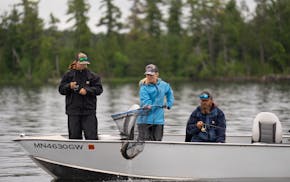A buck shot by a hunter near Wheaton in western Minnesota tested positive for chronic wasting disease (CWD), the first time the deer and elk disease has been detected in that area of the state.
The Department of Natural Resources announced the finding Thursday in a news release. Erik Hildebrand, DNR wildlife health supervisor, said the agency will implement its CWD response protocols, starting with three consecutive years of testing hunter-harvested deer in the vicinity.
Other likely management actions designed to mitigate spreading the disease include carcass movement restrictions, a ban against deer feeding, prohibiting using scents and other deer attractants and, sometimes, increased bag limits to help assess disease prevalence and cull the area's deer herd.
Deer Permit Area 271 along the South Dakota border will be ground zero for the special regulations, but surrounding deer permit areas also will be affected, DNR said.
"This discovery in western Minnesota, while unwelcome news, highlights the importance and necessity of our disease surveillance efforts and allowing hunters to test deer harvested anywhere in the state if they would like to," Hildebrand said.
The DNR said it will collaborate on actions to thwart the disease with South Dakota Game, Fish and Parks and the North Dakota Game and Fish Department.
CWD is an always fatal, neurological animal disease with no known cure that also affects elk and moose. It has been found in more than two-thirds of states. The Centers for Disease Control advises hunters not to eat meat or organs from an infected deer.

Xcel lets loose a small army of hungry sheep to keep its solar farm in order

Anderson: In early June, Minnesota fish are begging to be caught. Won't you help?

So you want to get an e-bike? Here's what you should know in Minnesota
Baby opossums are emerging from their mothers' pouches

